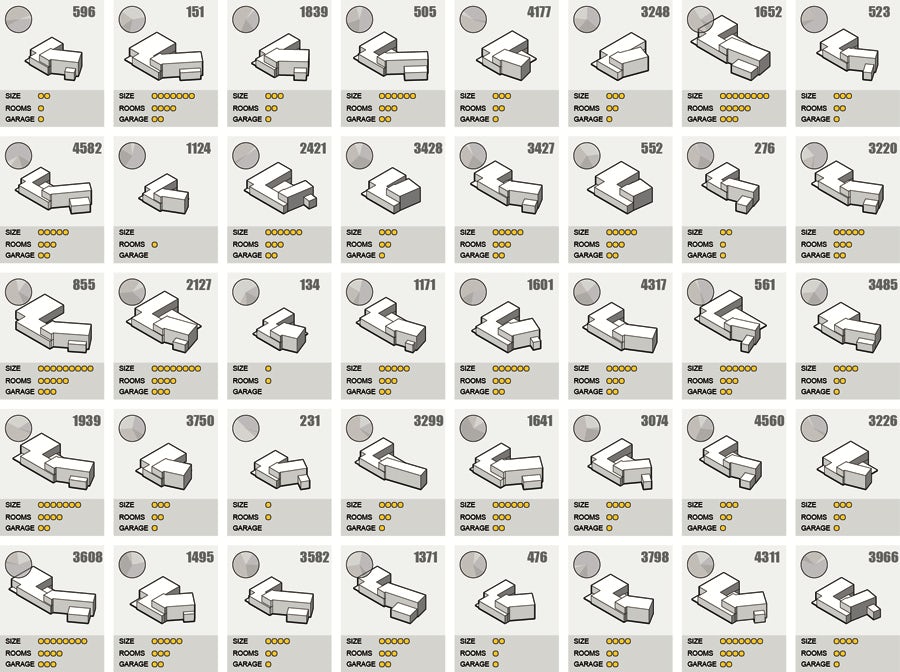Architizer's new image-heavy daily newsletter, The Plug, is easy on the eyes, giving readers a quick jolt of inspiration to supercharge their days. Plug in to the latest design discussions by subscribing.
If you haven’t been paying attention to the latest advancements in digitally-assisted design, now is a good time to start. As today’s fragmented technologies become increasingly coordinated, architectural practice is set to resemble an entirely different profession in the coming years. It will also feel relatively empty. The ascendance of computational design tools, in concert with the automated production of construction documents and specifications, will greatly reduce the number of people needed to complete architectural design services.
If an architect’s job is to synthesize a variety of requirements into a design for a building, then this effort has historically been outsourced to the technologies of pen and paper, physical models and, more recently, virtual models. These tools are used to determine whether or not a design successfully meets stipulated criteria, and the process is usually iterative. But recent advancements in digital processing are beginning to coalesce in such a way that they’ll soon outstrip an architect’s ability to devise design iterations.
These methods have undergone a slew of name changes as they’ve developed: computational, parametric, generative. The nuances are different but the core principle of each is a computer’s ability to understand all the functional requirements of a design, then spit back all the possible ways a solid form can meet those requirements. Since these iterations are generated infinitely faster with software than with a person’s brain, a designer needs only to set parameters and choose one of the resulting options.

Automatically-generated design options; via Architecture Research Lab
At present, this approach is mostly limited to product-scale applications, but it has been creeping into architectural design for a while, and it is not difficult to foresee a program capable of understanding all the possible components a building can be constructed from and all the possible ways they can fit together. When paired with an increasingly sophisticated ability to automatically produce construction documents from BIM software, the near future of the architecture profession comes into stark relief: the architect of tomorrow will be a curator, defining problems instead of solving them.
Compared to the way building design is currently practiced, this is a fundamentally different method. It also requires less people. While today’s design lead for a large project may wrangle a few junior staff to explore layouts before wrangling even more junior staff to make a drawing set, the design lead of the future won’t need most of that staff. This method will be embraced because the advantages are too great to resist: buildings will be designed in a fraction of the time needed today, with a fraction of the effort. They will likely perform better than today’s buildings and, with an infinite range of design options to choose from, they will probably look better, too.
All this points to an architecture profession with substantially diminished ranks. It won’t happen overnight, but it will probably happen quicker than the number of qualified architects seeking employment will shrink in order to maintain balance. So what then?

via Moving Insider
It might be helpful to consider the legal profession, which has a similar problem, but for much different reasons. Right now, there’s far more recent law school graduates than there are jobs for them to fill. This may have happened because universities capitalized on the availability of student loans by turning law schools into unregulated profit centers — a circumstance the architecture profession does not share. But despite the reasons, the result looming on the horizon is still the same: too many architects for too few jobs.
The legal profession has shifted to correct its situation over the last few years, with varying levels of success. The number of underemployed lawyers looking for work in related vocations has exploded, resulting in a whole new ecosystem of “J.D. advantage” jobs, for which a legal education is preferable but licensure isn’t required. Along with this has come a flood of internet writing about how to creatively apply skills learned in law school to non-legal jobs.
Looking around the architecture community, there’s no shortage of suggestions for things to do with an architecture degree that don’t involve practicing architecture. But the flow of architects into these jobs is a mere trickle compared to the deluge it could become if technological advancements in building design shrink the profession as much as they seem capable. Whether or not architecture castaways are capable of spawning enough new cottage industries to absorb their abundance would likely become a primary concern for the profession in this situation.

via Plush Marketing
The good news is that the value of design thinking is rising rapidly in other professions. Approaching problems from a holistic viewpoint, the backbone of an architect’s work since antiquity, is a relatively new concept in other enterprises. The idea of applying design thinking to anything, from the structure of a company to the format of an educational curriculum, seems to be undergoing universal adoption very quickly. It may become incumbent on architects to leverage their expertise in this area in order to gain employment in an expanding variety of fields.
One can only hope “M.Arch advantage” becomes a catchphrase on job boards in the near future.
Architizer's new image-heavy daily newsletter, The Plug, is easy on the eyes, giving readers a quick jolt of inspiration to supercharge their days. Plug in to the latest design discussions by subscribing.
Top image via Inhabitat









